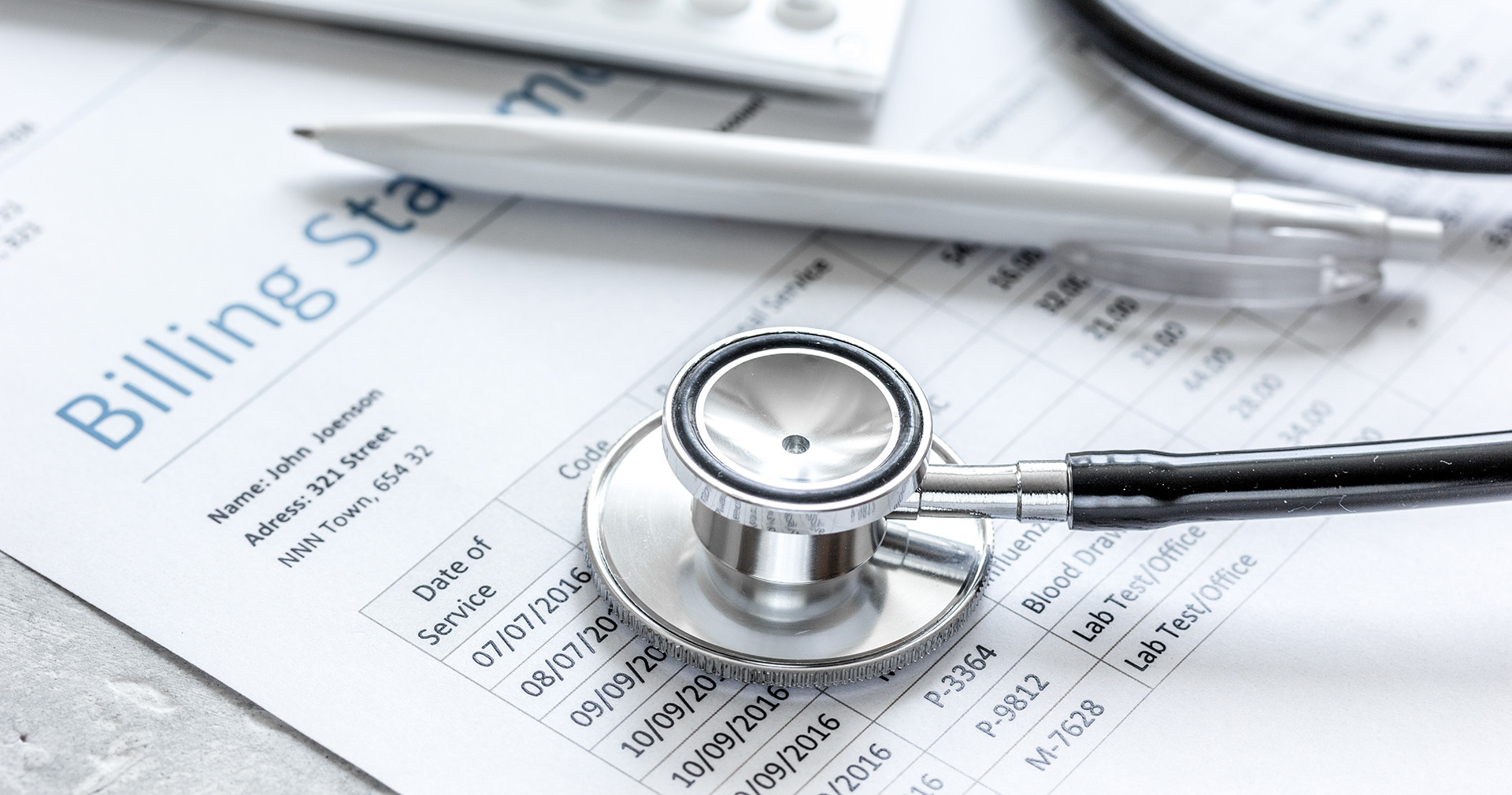Enhancing the Patient Financial Experience - Transparency and Communication in Billing

It’s no secret that the cost of healthcare is a major concern for most people. Four in 10 people have skipped or delayed healthcare in the past two years due to cost concerns.
In this article, we’ll discuss how to improve the patient financial experience.
First, we’ll look at the impact of patient experience in the healthcare industry. Then, we’ll explore how poor billing practices can affect patients. Next, we’ll share strategies to boost billing clarity and their benefits.
Finally, we’ll list actionable steps you can take to improve your billing processes right away.

The Impact of Patient Experience in Healthcare
Patient experience is about meeting expectations. It’s linked to patient engagement and service quality.
When you provide a high-quality patient experience, you enjoy:
-
Patient loyalty. Patients who have positive experiences are more likely to return for future care. They have ongoing relationships with their providers.
-
Word-of-mouth recommendations. Happy patients recommend their healthcare provider. This can lead to new patients without extra marketing costs.
-
Improved health outcomes. There’s a link between positive patient experiences and better health outcomes. Excellent patient experiences improve engagement. Patients are more likely to stick with their treatments. They follow through with preventive care.
-
Higher staff morale and reduced turnover. Positive patient interactions can lead to higher job satisfaction among healthcare staff. This translates to lower turnover rates and a more positive workplace environment.
-
Financial benefits. By improving patient experience, healthcare organizations can enhance patient retention. They can optimize resource use. This leads to efficient care delivery and higher revenue.
RELATED ARTICLE: Key Components of an Effective Revenue Cycle Management Compliance Program
How Poor Billing Practices Impact the Patient Financial Experience
Poor billing practices detract from the patient financial experience. They can result in confusion, dissatisfaction, and fewer on-time payments.
Here are some common billing issues that impact patient experiences:
Surprise Billing
In the past, public or private insurance coverage protected consumers. But now they face increases in cost-sharing. This shift has led to a rise in bankruptcies related to healthcare costs.
Bills that are not itemized or explained lead to confusion and frustration. Patients may not expect some of the char, leaving them feeling taken advantage of or misled.
This erodes trust and discourages them from seeking healthcare in the future.
Inefficient Payment Processing
Healthcare is expensive. From a patient’s perspective, delays in processing are more than just an annoyance. They could suggest a problem with their payment. And when there’s a significant amount of money on the line, this can cause feelings of stress and anxiety.
Patients might question the accuracy of their provider’s bills. They might contact their practice for clarification and assurance.
Inadequate Communication
Open communication is the foundation of any relationship. When patients are left in the dark, they feel uninformed, unprepared, and undervalued.
Providers failing to respond quickly to billing inquiries exasperates patient dissatisfaction. This can complicate financial interactions and fracture the patient-provider relationship.

6 Strategies to Increase Transparency and Communication in Billing
The patient journey through healthcare billing is often complex and fraught with uncertainties. But it doesn’t have to be this way.
You can adopt strategies to enhance the patient financial experience. Here are six to consider:
1. Explaining the Patient’s Financial Responsibility Early in the Care Process
Inform patients about their financial obligations. Do this before or during the initial stages of care. By discussing costs upfront, patients are better prepared to manage their expenses. They can make educated decisions about their care options.
There are many different ways to achieve this. You might send pre-visit estimates. You could add clear signage throughout your practice. Or admin staff could have direct and open conversations during appointment scheduling.
Whichever approach you take, upfront communication avoids surprise billing and nurtures trust. It can also increase the chances of timely payments. Why? Because patients make arrangements to cover their costs earlier.
2. Providing Clear and Concise Explanations of Medical Bills
Explain every aspect of a patient’s bill in simple, straightforward language. Avoid medical jargon to ensure clarity.
After providing care, offer to have your billing staff review patients’ bills. They should explain each charge and clarify what the insurance covers. They should also detail any out-of-pocket costs the patient will incur.
Provide a breakdown of services. Discuss why specific tests or treatments were necessary. Explain how insurance benefits were applied.
Clear billing explanations can reduce patient frustration and confusion. Patients who understand their bills and the reasons behind each charge perceive the billing process as fair. This means they are more willing to comply with payment.
Transparency fosters a positive relationship between healthcare providers and patients.
3. Offering Multiple Payment Options
Provide your patients with various ways to fulfill their financial obligations. This might include:
- Online portals
- Payment plans
- Phone payments
- Mobile apps
Every patient is unique. By diversifying your payment options, you cater to different preferences and technological capabilities. Everyone can find a payment method that works for them.
This enhances both convenience and accessibility while reducing stress. It also personalizes the patient experience, which boosts engagement and satisfaction.
Plus, when more patients handle their billing via self-service methods, administrative and billing staff have more time. They can focus on complex inquiries and dedicate more effort to patient care and growth-driving initiatives.
FROM ONE OF OUR PARTNERS: Do You Know How to Increase Patient Satisfaction?
4. Educating Patients About Their Insurance Coverage
Be proactive in helping patients understand their insurance benefits. Explain how these apply to their medical bills. Aim to:
- tart the conversation about insurance coverage early in the care process
- Provide clear and detailed estimates about service costs and out-of-pocket expenses
- Highlight potential extra charges
Offer both documentation and verbal explanations to meet different patient preferences.
These actions demystify insurance coverage. Patients are less likely to run into unexpected charges, which can result in billing disputes. That means you get paid faster. Your staff also spends less time resolving conflicts and answering billing questions.
5. Enhancing Communication in Medical Billing
Keep an open and consistent dialogue with your patients about their medical bills. This ensures they are well informed at every stage of their healthcare journey.
You can improve communication by sending regular updates. For example, updating a patient on the status of their insurance claim. Use medical billing software. This can automate reminders about upcoming payments and outstanding balances.
Additionally, offer easy-to-understand patient resources. These could explain healthcare pricing and billing terms. They might break down how insurance benefits work. This can guide patients through the complexities of medical billing—without demanding too much of your team’s time.
Consistent communication helps prevent patient anxiety. Openness builds trust as patients feel more in control of their healthcare expenses. Improving medical billing literacy supports patients, increasing satisfaction and retention.
6. Investing in Technology for Better Billing Transparency
Introduce technology solutions like DrChrono. These systems improve the clarity and efficiency of your medical billing practices.
DrChrono is an electronic health record (EHR) and billing system. It offers features like:
- Automated billing
- Real-time eligibility checks
- Clear, itemized digital billing statements
- Secure and compliant patient portals
Together, these tools streamline the billing process. They simplify how patients view and understand their payments. They can access their payment history and insurance adjustments.
Technology enhances convenience, but more importantly, it enables total transparency. Patients feel empowered and up to date. This wins their trust. Plus, it results in improved satisfaction levels and better provider financial outcomes.

Benefits of Transparent Medical Billing
Improving transparency in medical billing is a strategic imperative. It lifts patient trust and strengthens your organization’s financial health.
Here are three significant benefits:
Earn Patient Trust and Loyalty
Across the board, patients are dissatisfied with provider relationships. Research shows that 64% wish healthcare providers took more time to understand their needs.
Transparent billing practices can meet this desire. They prove your commitment to patients’ rights to understand the cost of care.
Furthermore, transparent billing will become increasingly important as the industry shifts toward a value-based care (VBC) model.
In healthcare, value is “the measured improvement in a person’s health outcomes for the cost of achieving that improvement.” So, the VBC framework focuses on patient outcomes over the volume of services provided.
Looking ahead, providers will work to enhance engagement to improve these outcomes. And patients that trust the billing system are more likely to feel empowered in their care journeys.
Empowered patients keep on top of their appointments. They follow their care plans and feel confident to speak up when issues arise. This improves the efficacy of your practice’s treatments. It enables you to thrive in the future of VBC.
In short, transparency makes patients feel valued and heard. This fosters positive and lasting relationships. It increases the likelihood of favorable health outcomes and encourages patient loyalty.
This is crucial for providers operating in today’s competitive market. Patient retention and referrals can significantly influence financial sustainability.
Enable More Convenience
Adults in the US spend eight hours each month organizing care. That’s equal to an entire workday.
The sheer time demand can be a massive source of frustration. Many put off care as a result.
Transparent billing can help ease this pain point. Here’s how:
-
With transparent billing, patients have fewer issues and questions. This frees up time for their healthcare needs.
-
User-friendly patient portals make it easier for patients to manage their financial obligations.
-
Providing detailed cost information upfront allows patients to budget for healthcare expenses.
Convenient billing and payments also streamline the admin processes associated with healthcare management.
Patients can take care of their own financial responsibilities. This reduces stress and lessens the administrative burden. Staff deal with fewer billing inquiries and complications from unclear practices.
As administrative demands decrease, healthcare staff can focus more on patient care. This shift improves both the efficiency and quality of healthcare services. Staff spend more time supporting patient needs and less on bureaucratic tasks.
FROM ONE OF OUR PARTNERS: 5 Best Practices for Collecting Patient Payments
Secure Better Collection Rates
Transparent medical billing enhances both patient experience and healthcare providers’ collection rates. When patients understand their costs upfront, they’re more likely to pay on time.
Clear billing practices prepare patients by outlining expected charges before visits. This preparation reduces the shock of unexpected bills, easing financial stress. Informed patients manage their healthcare expenses better and tend to settle bills faster. This improves cash flow for providers.
This is more than just theoretical. Evidence supports the effectiveness of this method. One case study found that implementing advance cost estimates led to a 27% increase in upfront payments. This boosted the provider’s revenue by nearly $2 million annually.
Clear communication about costs is crucial. It builds a financially sustainable and patient-focused healthcare system. You can achieve better collection rates, and your patients experience more financial certainty.
RELATED ARTICLE: How to Increase Patient Collections in Your Practice
First Steps to Enhancing Your Patient Financial Experience
Here are five practical tips to improve the patient financial experience:
-
Check your billing process. Identify any bottlenecks or inefficiencies in your current billing system. Do these delay payments or confuse patients? Streamline these processes to enhance transparency and speed up collections.
-
Educate your staff. Your staff are on the front line. Make sure they understand the importance of clear communication. Train them on best practices.
-
Send automated reminders. Use technology to send automated billing reminders to patients. This helps keep their upcoming or outstanding payments top of mind and can reduce payment delays.
-
Offer flexible payment options. Provide patients with multiple payment methods, including online payments, installment plans, and sliding scales based on income. Flexibility can ease the financial burden and encourage timely payments.
-
Invest in advanced billing technology. Consider adopting advanced billing technology to future-proof your practice. This can include software that integrates billing, scheduling, and EHRs. Unifying these operations enhances the accuracy and transparency of billing processes. It also offers more in-depth data for forecasting and decision-making. This prepares your practice for long-term success.